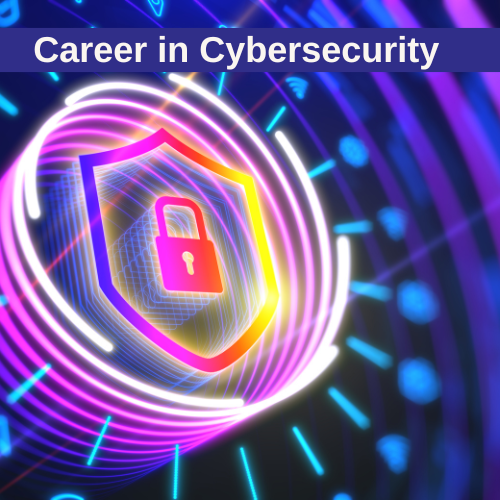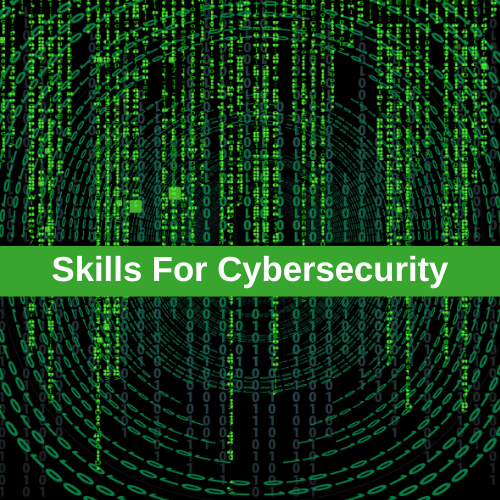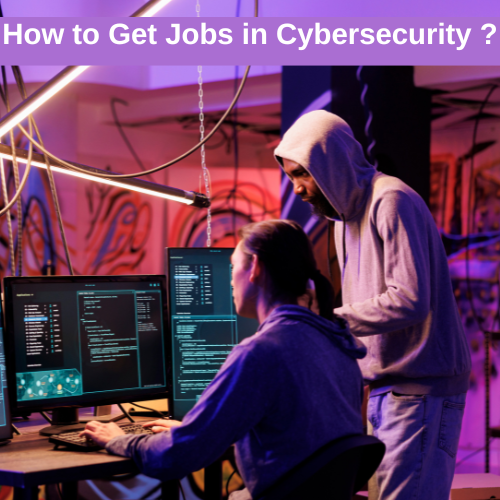Last Updated on 1 week by studentliveinfo
Table of Contents
Digital Literacy and Cybersecurity for Students
In the ever-evolving realm of online learning, it is essential to possess cybersecurity and digital literacy skills in order to achieve success. This article explores the significance of these skills in safeguarding against potential threats and traversing the digital realm, thereby establishing the foundation for a successful online learning experience.
The ability to make efficient use of digital tools, technology, and the internet is precisely what is meant by the term “digital literacy.” It involves a wide range of skills, such as the capacity to locate, assess, utilize, and produce information that is associated with the internet.

Cyber literacy is the capacity to use computer-related technology effectively, to put it simply. At the same time, be aware of the potential consequences of some of your online behavior. It also entails locating trustworthy resources to acquire knowledge for daily living.
Naturally, the next question that comes to mind is: How important is cyber literacy? You might be surprised to learn how crucial it is. To make wise judgments about your spending and purchases, it’s critical to understand financial literacy.
Information Literacy
Information literacy is an essential subset of digital literacy that focuses on the capacity to detect when information is required, as well as the ability to access, assess, and make good use of the information that is required. This is a skill that is absolutely necessary in this day and age, when large volumes of information are easily accessible but the quality and dependability of that information can vary dramatically.
Technical Skills
The acquisition of technical skills is necessary for everyone who is interested in pursuing a career in cybersecurity, as well as for individuals who wish to ensure their personal digital security. Through the acquisition of these abilities, individuals are able to comprehend, recognize, and counteract a variety of cyber dangers.
Important Aspects of Networking Comprehension of the Protocols Used in Networks: It is essential to have a working knowledge of protocols such as TCP/IP, DNS, HTTP/HTTPS, and FTP in order to comprehend how data moves across networks and how to protect it appropriately.
Firewalls and Virtual Private Networks (VPNs): The capability to configure and maintain firewalls and VPNs in order to protect networks from illegal access and provide safe communication. Architecture for the Network: It is necessary to have an understanding of the structure of networks, including routers, switches, and network topologies, in order to discover vulnerabilities and ensure that network infrastructure is secure.
Operating Systems and System Administration
Proficiency in Windows, Linux, and macOS is necessary, as each has unique security features and vulnerabilities. Command-Line Skills: Knowing how to use command-line interfaces (CLI) in Linux and Windows for tasks like system monitoring, file management, and process control. User and Privilege Management: Understanding how to manage user accounts, permissions, and roles to ensure only authorized users have access to specific resources.
Skills for Cybersecurity
The Importance of Being Able to Know Information For students to achieve academic success, information literacy is essential because it helps them to do efficient research, compose papers that are well-informed, and engage critically with the coursework they are required to complete.
Informed Decision-Making: In day-to-day life, information literacy assists individuals in making better decisions by enabling them to locate and assess the information they require, whether it is on their health, their finances, or social issues.
Individuals can improve their understanding of difficult situations, recognize biases, and steer clear of misinformation if they have the ability to critically assess information. Learning That Lasts a Lifetime: Information literacy is a core ability that promotes ongoing learning and adaptation in a world that is constantly changing, particularly when new information and technology emerge.

Importance of Computer Literacy
Developing Capabilities in Computer and Information Literacy Students can strengthen their information literacy abilities with the assistance of educational institutions through the following:
Instruction that is devoted to the subject of research skills, critical evaluation, and ethical use of information is provided in the form of classes or workshops. Students are able to use the skills they have learned in a variety of settings when they participate in integrated learning, which involves incorporating information literacy training into a variety of courses.
Providing access to resources such as libraries, databases, and digital tools, as well as providing instruction on how to make the most of these resources, involves providing access to resources. Students receive assistance from librarians and teachers, who play a crucial role in leading students through the process of conducting research, assisting them in refining their search tactics, and instructing them on how to critically analyze sources.
Cryptography
Understanding how to install and manage encryption methods such as AES, RSA, and SSL/TLS in order to protect data both while it is in transit and while it is at rest is an essential part of cryptography encryption techniques.
(PKI) stands for “public key infrastructure.” Have knowledge of public key infrastructure (PKI) and how digital certificates are utilized to authenticate identities and secure communications. A familiarity with hashing techniques, such as SHA-256, which are used to verify the integrity of data is required for hashing algorithms.
Practicing Secure Coding Policies Acquiring an Understanding of Shared Vulnerabilities: The ability to write code that is resistant to vulnerabilities such as SQL injection, cross-site scripting (XSS), and buffer overflows, as well as the knowledge of how to avoid these difficulties.
Review of the Code: It is possible to examine and audit code in order to identify security problems, which guarantees that software is free from vulnerabilities. Examination of Security: A familiarity with the tools and methods that are used to verify the security of applications, including both static and dynamic analysis.
SIEM
Security Information and Event Management (SIEM) Capability in the use of security information and event management (SIEM) tools such as Splunk, ArcSight, or ORadar for the purpose of monitoring and analyzing security events across several networks and systems.
The ability to correlate security events from a variety of sources in order to identify patterns that are indicative of possible security issues comes under the category of event correlation and analysis. A knowledge of how to set up automatic reactions to specific sorts of security events in order to mitigate hazards in a timely manner is one definition of automated response.
Career in Cyber Security
Students who are interested in pursuing a career in cybersecurity will find that it is an exciting and innovative sector that provides opportunity to work in a variety of businesses and protect vital information and infrastructure.
1.Security Analyst
Monitor and protect an organization’s systems and data. Penetration Tester: Simulate attacks to find vulnerabilities in systems. One of the most important positions in the realm of cybersecurity is that of a Security Analyst, who is accountable for safeguarding the information systems and data of a business against potential dangers.
Checking the Status of Security Systems: Utilize security information and event management (SIEM) solutions to perform continuous monitoring of security alerts, logs, and reports throughout the system. Identify and respond to potential security events, keeping in mind the importance of taking prompt action to reduce risks.
Responding to an Incident: To have a better understanding of the nature and scope of the danger, it is necessary to investigate and analyze security breaches. Collaborate with other teams in order to contain incidents and find solutions to them. Keeping a record of incidents and preparing reports that outline the response and resolution are both important.
A Security Analyst monitors, analyzes, and protects an organization’s digital infrastructure against security breaches and threats.
2.Security Architect
Design and implement secure network and system architectures. Incident Responder: Address and manage cybersecurity breaches and incidents.
Within the realm of cybersecurity, a Security Architect is a senior position that is accountable for the development and implementation of robust security structures in order to safeguard an organization’s information systems of all kinds.
In order to guarantee that security measures are included into each and every layer of an organization’s technological infrastructure, this function requires strategic planning, hands-on design, and coordination across a number of different teams.
Process of Developing a Security Architecture: A comprehensive security architecture should be developed for information technology systems, which should include networks, applications, and data. Make sure that the architecture is in accordance with the business’s objectives and that it conforms with the norms and standards of the industry.
Process of Developing a Security Strategy: Participate in the development and execution of long-term security initiatives in collaboration with executive management. Maintain a continuous assessment of the organization’s security posture and provide suggestions for ways to improve it constantly.
3.Chief Information Security Officer (CISO)
Oversee and manage an organization’s overall security strategy. Process of Developing a Security Architecture: A comprehensive security architecture should be developed for information technology systems, which should include networks, applications, and data.
Make sure that the architecture is in accordance with the business’s objectives and that it conforms with the norms and standards of the industry.
Process of Developing a Security Strategy: Participate in the development and execution of long-term security initiatives in collaboration with executive management. Maintain a continuous assessment of the organization’s security posture and provide suggestions for ways to improve it constantly.
Maintain tight collaboration with other information technology teams, such as those responsible for network engineering, software development, and system administration, in order to include security measures into their projects. Ensure that security analysts, engineers, and other members of the IT workforce are provided with leadership and direction.

Job Sectors in Cybersecurity
A. Security Operations
- Security Analyst: Monitors and analyzes security systems to detect and respond to threats.
- Incident Responder: Investigates security incidents, containing and mitigating their impact.
- Security Operations Center (SOC) Analyst: Works in a SOC to monitor and respond to security alerts.
B. Governance, Risk, and Compliance (GRC)
- Risk Analyst: Assesses risks to an organization’s data and systems, recommending mitigation strategies.
- Compliance Manager: Ensures that the organization adheres to relevant regulations and standards.
- Auditor: Reviews systems and processes to ensure they meet security policies and standards.
C. Threat Intelligence
- Threat Intelligence Analyst: Gathers, analyzes, and disseminates information about current and emerging cyber threats.
- Cyber Intelligence Specialist: Focuses on understanding the tactics, techniques, and procedures (TTPs) of cyber adversaries.
D. Security Consulting
- Cybersecurity Consultant: Provides expert advice to organizations on how to improve their security posture.
- Risk Consultant: Helps organizations assess and manage cybersecurity risks.
- Compliance Consultant: Assists organizations in meeting regulatory requirements and standards.
E. Executive Roles
- Chief Information Security Officer (CISO): Leads the organization’s cybersecurity strategy and oversees all security operations.
- Security Director: Manages the security team and coordinates security efforts across the organization.
- Security Program Manager: Oversees specific cybersecurity projects and initiatives.
F. Cybersecurity Research
- Cybersecurity Researcher: Conducts research to identify new vulnerabilities and develop innovative security solutions.
- Malware Analyst: Studies malicious software to understand its behavior and develop countermeasures.
Cryptographer: Specializes in developing encryption algorithms and cryptographic protocols.



0 Comments